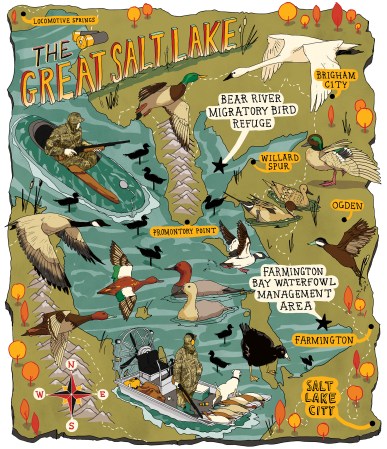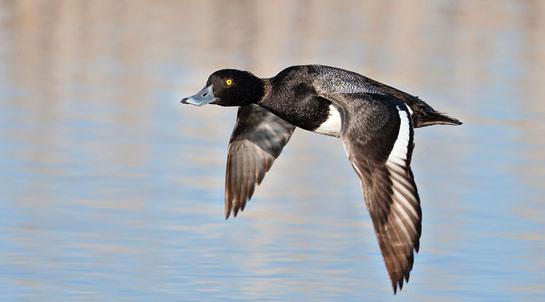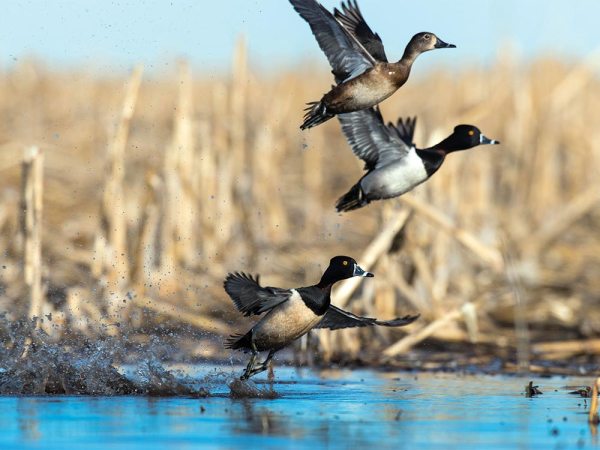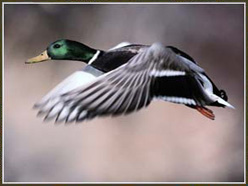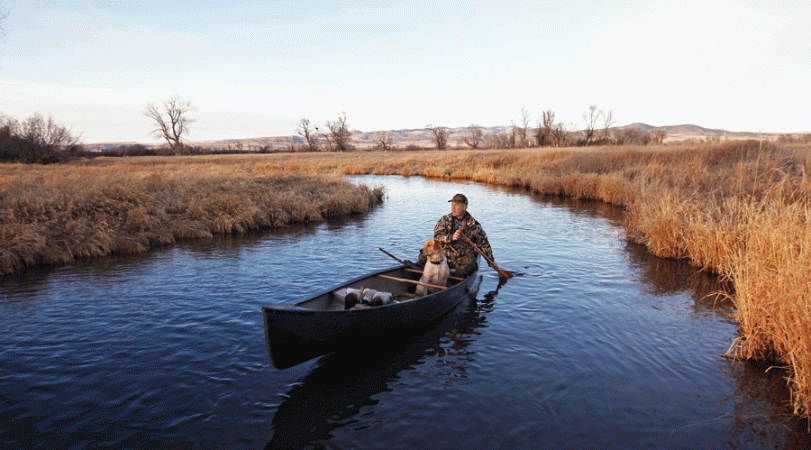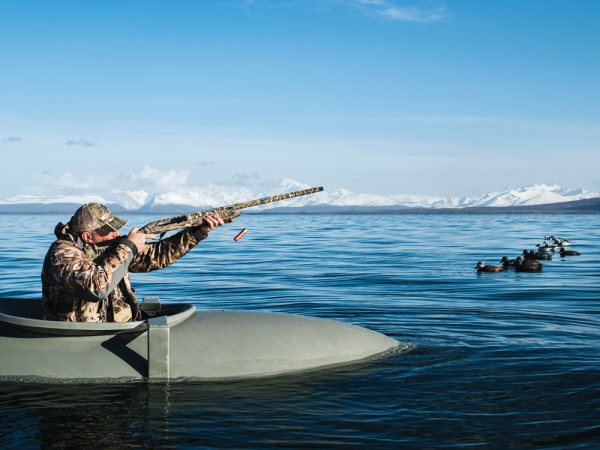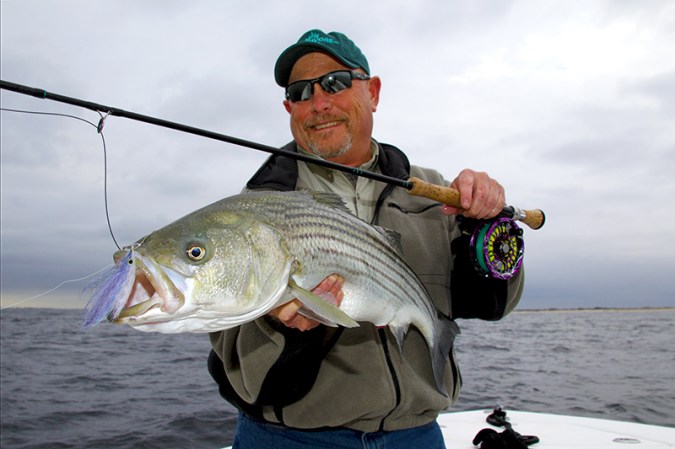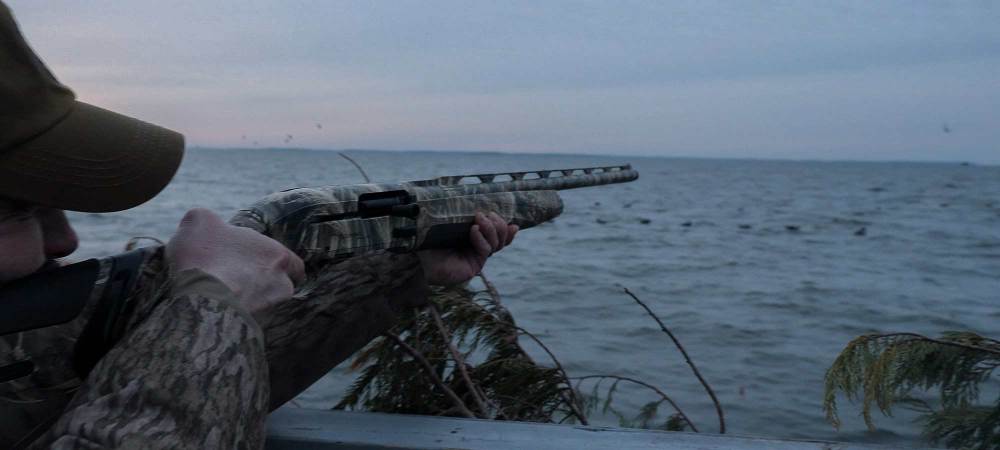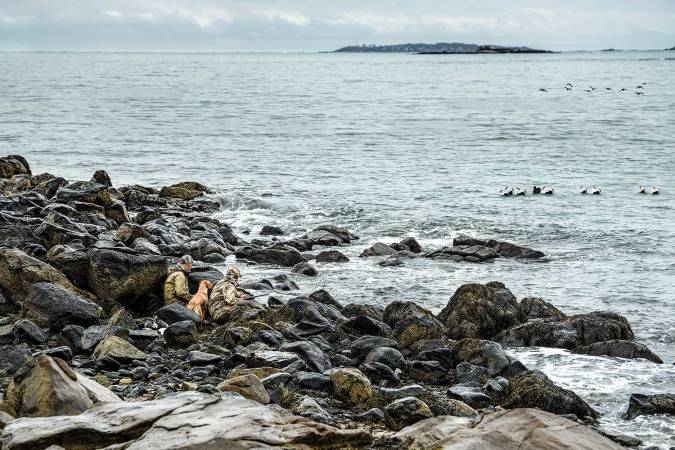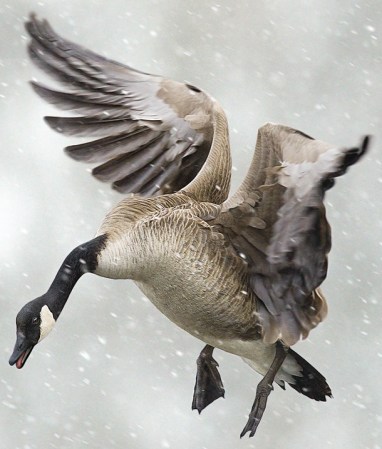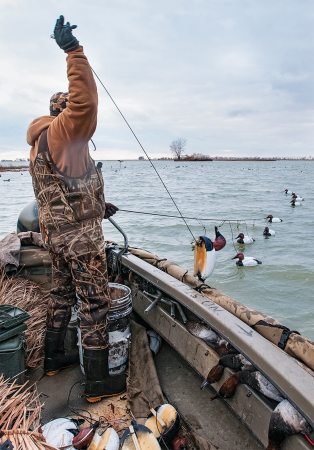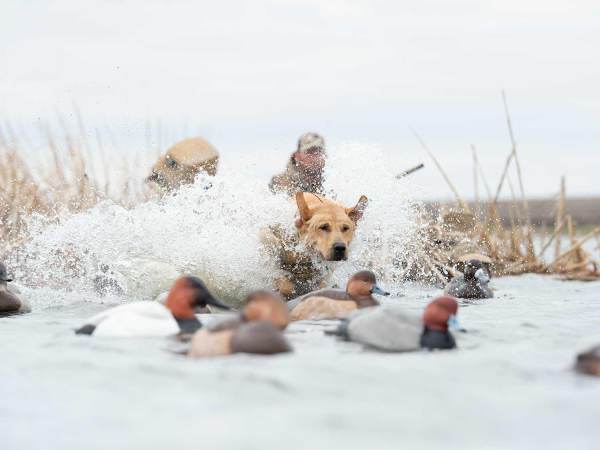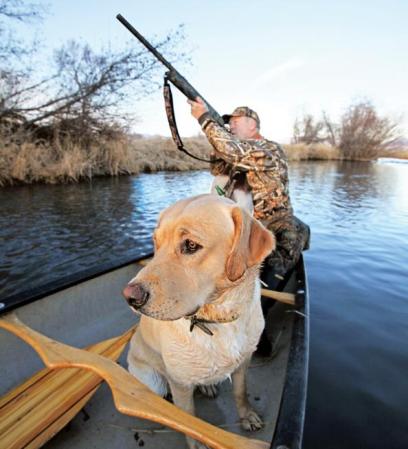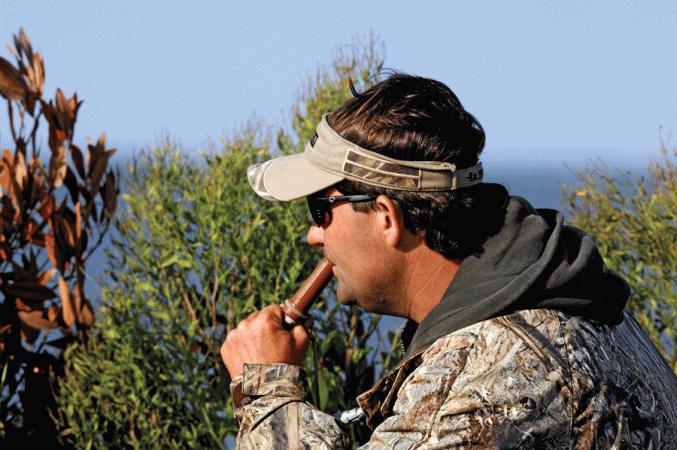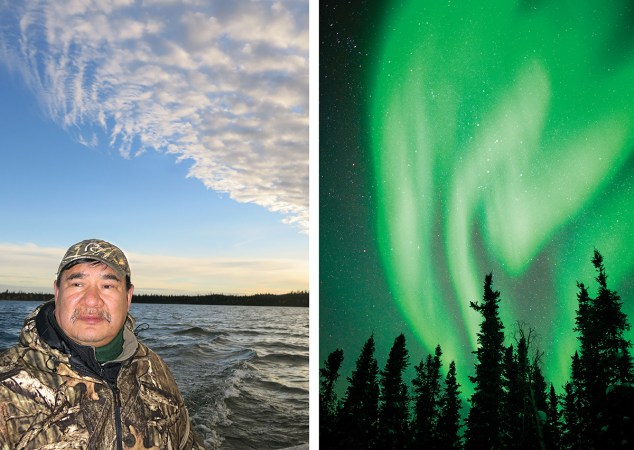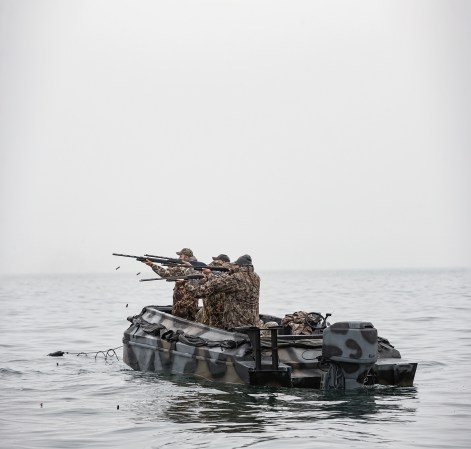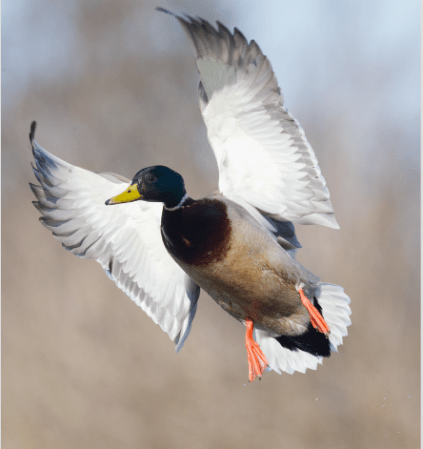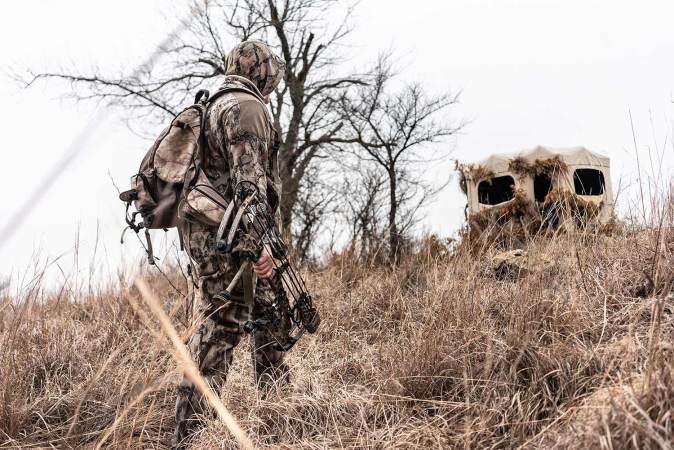I don’t want to die out here,” Brian French says, as he clips his layout boat to the anchor cord floating in the heavy gray swell of Lake Michigan. “So I designed this boat to handle rough water.”
We load our shotguns and scootch down into the hull, getting as comfortable as we can. Bobbing in 2-foot waves half a mile offshore, we scan the horizon for the moving specks that will become ducks. For five minutes, nothing. Then out of nowhere a small knot of ducks appears, skimming over the water’s surface. “Bluebills!” says French. “Don’t move.” I didn’t know where I would go.
The ducks swing around us in a wide arc, checking out our spread. Then they turn into the wind, wings locked, webs splayed, ready to drop into the decoys.
“Take ’em,” French hisses. We sit up, swing and fire as the ducks flare and gain altitude. The black chests of the drakes present themselves in stark contrast to their white bellies. Seven birds make one more pass just out of range, then head downlake for safer water. Two pairs of legs feebly kick skyward among the decoys.
BOAT BUILT FOR TWO
Most layout boats are about as snug as a coffin, but with fewer amenities. French’s two-man layout boat can withstand nearly anything the angry waters of the Great Lakes can dish out in November. Electric motors let him maneuver it into position or zip out to retrieve downed ducks. Hydraulics lift the motors up to avoid entangling decoy lines. Two bilge pumps keep the lake outside the boat, where it belongs–a big comfort when you’re far from shore.
RESPITE FROM ROUGH WATER
Dawn becomes day with a faint brightening of the gray horizon. Dark clouds hang low and heavy, and the wind grows stronger, whipping waves into whitecaps and blowing icy froth over the rocking layout boat. More bluebills come, some suicidally close, but now the waves toss us so wildly that we can’t hit them.
We shoot and miss, laugh and curse, shoot again and miss again, and still the bluebills keep coming. Waves break over the deck, spilling cold water into the cockpit. Finally, we call a truce. French’s buddy, Steve Plater, motors up, grinning through the flying foam. He’s been keeping an eye on us from the 22-foot johnboat tender several hundred yards inshore. “Let’s try the break wall,” he suggests. We pull the decoys, hitch the layout boat to the tender and clamber aboard.
Back at the southern break wall, we set out several strings of decoys and anchor both boats tight to the rocks. The ducks, mostly local mallards and shore-hugging buffleheads, never see us until they are practically overhead. Plater and French are deadly on high incomers, and their birds fall nearly into our laps. Ducks fly well into the afternoon, and we are happy to have abandoned the whitecaps.
TEAM EFFORT
Open-water duck hunting requires some specialized gear: a layout boat, a tender boat, lots of decoys and warm, waterproof clothing. It is also a team sport. The gunner or gunners lie concealed in the layout boat, surrounded by decoys, usually several hundred of them. One or more partners wait in the tender, or pick-up boat, close enough to watch the action and help if needed, but distant enough to avoid spooking ducks.
Most open-water hunters deploy their decoys on “mother lines,” with a heavy anchor on one end and a dozen or more decoys attached via short lines. Stowed neatly below a hinged deck or in large trash cans, they can be quickly set out or picked up. French and Plater can set out or pick up 90 decoys in about 15 minutes.
Action for bluebills (scaup) is best when fresh flocks arrive from the North. In many areas, there is good shooting for other divers, such as redheads, goldeneyes and buffleheads, as well as mallards. Late in the season, French hunts sea ducks sometimes two miles offshore.
Rules regarding the legal shooting distance from shore and whether you must anchor your boat vary from one body of water to another, so check your state regulations. On the Great Lakes, a boat you shoot out of must be at least 500 feet from shore, but the craft need not be anchored.
Layout shooting is not for the reckless or the faint of heart. The winds of November bring many a duck to the Great Lakes, but they have sunk many a ship as well.
For more regional information, go to www.outdoorlife.com/regional

